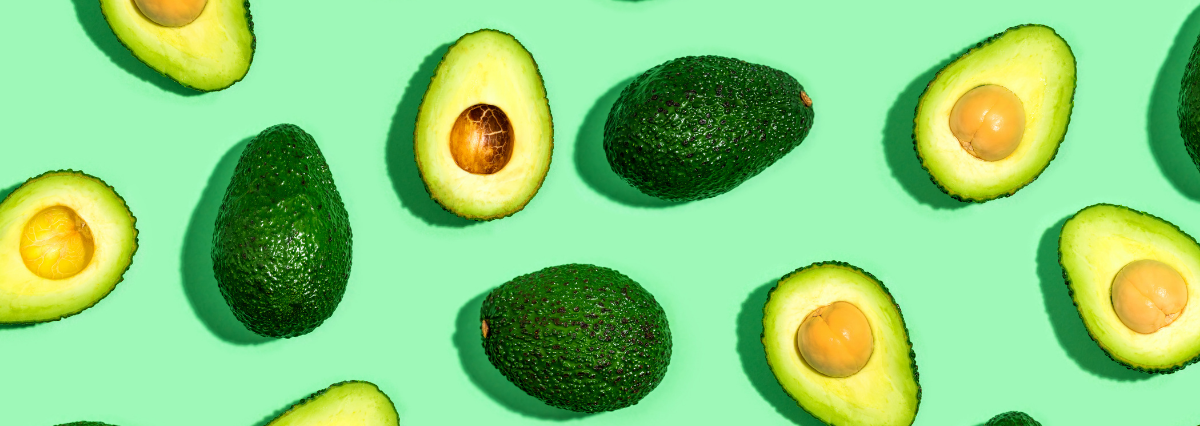What Are Macronutrients and What Do They Do? (It’s Not That Complicated)
Picture this…
You’ve started your fitness journey. You bought a gym membership, a few supplements, and you started researching a diet and nutrition plan.
Time and time again, the same nonsense comes up. A word you keep constantly seeing: ‘macronutrients’.
It makes you wonder: “what are macronutrients and what do they do?”. You find yourself scratching your head — left with no conclusive answer to either question.
This leaves you confused as all else. Wondering if the time you put into the gym is even worth it. Especially if you don’t even have an understanding of diet and these so-called ‘macronutrients’.
Look, I understand completely. Sometimes the language and information in the health and fitness world seem like a bunch of gibberish when you’re a beginner.
In this blog post, I’ll be answering your questions.
You’ll learn:
- What macronutrients are
- What macronutrients do
- The three types of macronutrients and their role in your body
- Sources of these 3 macronutrients
- And, how to calculate the macros you need
Well, what do you say?
Let’s get started.
What Are Macronutrients and What Do They Do?
Before diving into specifics I want to talk about macronutrients in a broader sense.
Macronutrients are nutrients your body needs in large quantities to stay healthy and to function.
There are three main types of macronutrients:
- Fats
- Carbs
- Proteins
It’s important to have a balance of all three in your diet — they all play a role in your health.
So, how do specific macronutrients help the body? And, what do these macronutrients do for the body? Let’s talk about it.
Fats

What do they do? Why are fats important?
Of all the three macronutrients fats contain the most calories. 1 g of fat provides 9 calories.
Fat provides energy, helps with nutrient absorption, hormone production, and maintaining your body temperature.
All essential components of your body's functions.
Listen, I was once a skinny guy — I can say things are a lot warmer when you pack on some fat or weight in general.
(Remember I live in Canada… it gets cold). And to answer your question, no — we don’t live in ‘igloos’.
It’s recommended that you intake around 25-35% of your calories from fats.
Ideally, good fats such as monounsaturated and polyunsaturated fats.
Some sources of fats include:
- Avocados
- Almonds
- Olive oil
- Egg yolk
- Chia seeds
- Peanut butter
And much, much more.
Carbohydrates

What do they do? Why are carbohydrates important?
Carbohydrates or better known as ‘carbs’ serve as fuel for the body.
They include:
- Sugar
- Starches
- Fiber
Mostly all sources of carbs break down into glucose or blood sugar. Your body then uses either or for immediate energy or stores it for later as glycogen. (Glycogen is just the ‘stored’ version of glucose). It’s stored in your liver and muscles.
1 g of carbs provides 4 calories.
Much less compared to fats. While it does provide fewer calories it’s actually our main contributor to our diet. Making up most of our calorie intake for every day.
It’s recommended that carbs make up 45-65% of your total calorie intake.
And that isn’t a bad thing, so hold your horses.
Although carbs are a debated topic in the industry, they’re not a bad guy. I mean, all they want to do is supply us with energy and help keep us going throughout the day.
They have good intentions. But due to civil unrest in the community of health and fitness — people label carbs as ‘bad’ or ‘evil’.
Of course, eating too many carbs can be a bad thing. Doing too much of anything can be bad. It’s all about finding the right balance based on your lifestyle and goals.
With carbs, I would recommend you consume more ‘complex’ carbs than ‘simple’ carbs.
This will give your body more nutrients, vitamins, minerals, and it’ll keep you full for longer periods of time.
Some sources of carbs include:
- Oatmeal
- Potatoes
- Sweet potatoes
- Pasta
- Rice
And much more!
Protein

What does it do? Why is protein important?
Proteins are an essential component of the building of tissues, enzymes, and hormones. They’re also crucial for processes like immune function and cell signaling.
When muscle fibers tear during exercise, proteins repair these muscles. Making them bigger and stronger than before.
Protein provides 4 calories per gram. The exact same amount as carbs.
The recommended protein intake is 10-35% of your total calorie intake. There are many variables that will affect this amount. Like your body weight, how often you exercise, your goals, and more.
Some sources of protein include:
- Chicken
- Beef
- Beans
- Chickpeas
- Quinoa
And much more!
How to Use The Information Provided
It’s great to understand this stuff. But, more than likely you want actionable steps you can take to start to implement this knowledge.
First off, you’ll want to figure out the correct amount of calories you should be consuming a day. You can find this out by using an online calorie calculator!
Once you know how many calories are suitable for you based on your age, sex, goals, and more. You’ll have to figure out the best macro ratio for you! The macro ratio is the percentage of each macro that’s in your diet. For example, you could have 25% protein, 55% carbs, and a 20% fat macro ratio.
Your macro ratio depends on many variable factors like your weight, body type, and more.
Lastly, once you know how many calories you should be consuming and the macro ratio you want to run with. It’s time to calculate how many grams of fat, carbs, and protein should be in your diet daily.
Here’s a hypothetical example: 2400 calories, 35% protein, 25% carbs, and 40% fat.
P.S I drew these numbers from thin air like Houdini — for your examples sake.
With these ratios, you would multiply:
- 2400 x 0.35 for the protein
- 2400 x 0.25 for the carbs
- 2400 x 0.40 for the fat
This leaves you with:
- 840 calories of protein
- 600 calories of carbs
- 960 calories of fat
Now, all that’s left is figuring out the exact amount of grams for each macronutrient you should be consuming.
We know that there are 4 calories for 1 gram of protein.
Divide 840 by 4. This leaves you with 210 grams of protein.
Then follow suit with the other two macronutrients — fat and carbs.
Per 1 g of fat, there are 9 calories.
Per 1 g of carbs, there are 4 calories.
And, voila! You’ve just calculated the appropriate macronutrient diet for you, based on your own goals!
Closing Thoughts
You see — macronutrients really aren’t all that complicated. Sure when you first hear the word you might think what sort of gibberish is this?
But with some basic knowledge, you can use what you know to your advantage in being more mindful about your eating habits.
In this article you learned:
- What macronutrients are and what they do
- What each macronutrient does for the body
- The number of calories per gram of each macro
- The percentage of each macro that should be in your diet
- And, sources of each macro
Now, all that’s left is for you to take action. Nobody but you can take control of your life and start striving towards the health you want or the body you desire.
Ultimately, your day-to-day habits and choices will create your outcomes.
So, what do you say?
I say it’s time to get off your feet and start taking action. If you’re looking for a community that will motivate and guide you, Yes.fit is the place to be.
Don’t let your excuses from yesterday determine your actions for today and your results for tomorrow.
Just start.



















